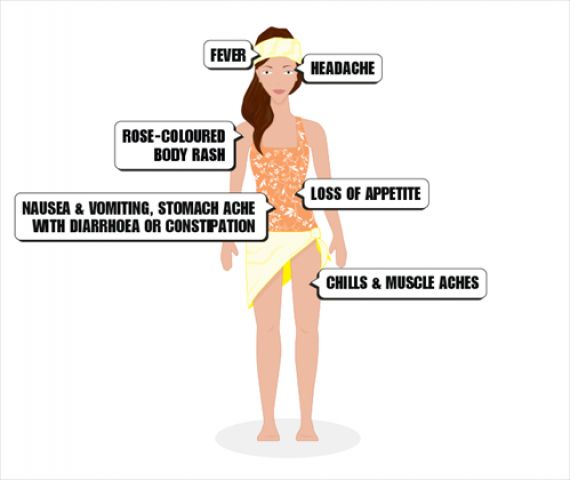
Typhoid fever is contracted by drinking or eating the bacteria in contaminated food or water. People with acute illness can contaminate the surrounding water supply through stool, which contains a high concentration of the bacteria. Contamination of the water supply can, in turn, taint the food supply. The bacteria can survive for weeks in water or dried sewage.
Causes of typhoid
The Salmonella typhi bacteria will be in the stools of an infected person after they've been to the toilet. If they don't wash their hands properly afterwards, they can contaminate any food they touch. Anyone else who eats this food may also become infected. People who drink contaminated water or eat food washed in contaminated water can develop typhoid fever. You can contract typhoid by eating seafood from a water source contaminated by infected faeces or urine, eating raw vegetables that have been fertilised with human waste, contaminated milk products, using a toilet contaminated with bacteria and touching your mouth before washing your hands. Having oral or anal sex with a person who's a carrier of Salmonella typhi bacteria
Symptoms of typhoid
Some of the symptoms that you could face if you’re suffering from typhoid are headaches, poor appetite, fever, generalized aches and pains, diarrhea, lethargy.
Treating typhoid
Several antibiotics are effective for the treatment of typhoid fever. Chloramphenicol was the original drug of choice for many years. Because of rare serious side effects, chloramphenicol has been replaced by other effective antibiotics. The choice of antibiotics is guided by identifying the geographic region where the infection was contracted. If relapses occur, patients are retreated with antibiotics. Often, removal of the gallbladder, the site of chronic infection, will provide a cure. For those traveling to high-risk areas, vaccines are now available.
Ways on how to respond to stubborn Kids!!!
5 Things you’re addicted to, but don’t know!!!
Oatmeal Water For A Slimmer, Healthy, Fit Body!!!